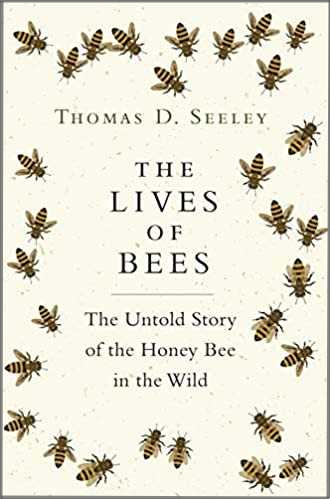How Do Bees Get Protein And Why Do Bees Need It?
Question: What is the main source of protein for bees, and how is it used?
Answer:
Bees get their protein from pollen which they collect from flowers. By various means, worker bees then turn the pollen into food for the the developing young and queen honey bee.
How honey bees get their protein
When pollen is collected by foraging worker honey bees and returned to the nest or hive, it is then mixed with nectar (or honey) and made into bee bread for feeding larvae.
Thus honey bee larvae and young adults thus receive most of their protein from pollen which has been stored in the wax hexagonal cells as bee bread.
Some protein also comes from royal jelly which has been biosynthesized (see below) from flower pollen by nurse honey bees. Royal jelly is then secreted by special glands in the heads of worker nurse honey bees. It is fed to the queen honey bee and to worker and drone larvae for a short time.
Protein is therefore provided by pollen which is in effect, biosynthesized by nurse bees into royal jelly, which is the main source of protein for developing larvae and the queen (Ghosh et al 20202 citing Winston, 1987, Paoli et al., 2014).
Thus, in terms of the honey bee diet, for the raising of honey bees, ultimately flower pollen is the key source of protein for bees which is then turned into food in the form of stored bee bread or bee secretions.

So what happens if bees don't get enough protein-giving pollen? This is relevant for anyone wishing to create a bee garden, and is the reason why a range of nectar and pollen rich flowers and shrubs is vital.
Pollen provides protein, so what happens to bees if they don't get enough pollen?
Pollen is the primary source of protein, lipids, sterols, minerals, and most vitamins for bees1.
- The protein contained in pollen is itself made up of a range of amino acids.
Honey bees must obtain these amino acids from their diet for growth, to maintain and repair health (somatic maintenance)2.
- Young adults require large amounts of pollen to develop secretory glands (hypopharyngeal glands, or HPG - the gland which secretes royal jelly) and nutrient reserves that are critical for later roles as nurse bees and foragers.
Compared to pollen-fed adults, pollen-starved adult workers show poor development of the hypopharyngeal glands1. - Bees deprived of pollen sources have significantly shortened lifespans and reduced task efficiencies1.
This may affect the functioning of the colony as a superorganism. - According to Carroll et al1 (citing various research papers):
"Individual workers that are absolutely deprived of pollen may exhibit stunted growth, reduced internal nutrient stores, reduced nursing ability, and a generally shortened lifespan.
Under severe pollen deprivation, workers cannot efficiently nurture the next generation of young larvae due to an inability to produce larval jelly [royal jelly].
Colonies lacking immediate pollen resources can consume excess eggs or larvae (brood cannibalism), or fall back on the internal nutrient stores of adult workers as a reserve.
However, such emergency resources rarely sustain a colony more than a couple of worker generations."
Amino acids - the building blocks of protein.
Flower pollen contains a range of amino acids, and of these it has been found that 10 amino acids are considered essential for honey bees3. These are:
Leucine,
Valine,
Isoleucine,
Methionine,
Lysine,
Threonine,
Histidine,
Phenylalanine,
Arginine, and
Tryptophan.
Amino acids are known to be important in a number of areas of bee biology.
For example, arginine helps to enhance immunity and fitness, whilst lysine and methionine raise the size of the fat body2 which is especially important for storing energy and nutrients of overwintering honey bees.
Other amino acids found in flower pollen, considered non-essential, have nevertheless been found to be beneficial. For example, amino acid proline is used as fuel for flight and helps in increasing cold hardiness2.
Which flowering plants provide protein-rich pollen for bees?
Many, many flowering plants contain lots of nutrient rich pollen for bees, and far to many to mention on this page, but for examples see my list of bee-friendly flowers for starters.
A number of studies have been conducted, especially on wild flowers, but garden cultivars and relatives are often available, whilst others can easily be incorporated into lawns and flower borders.
For example, Ghosh et al2 profiled the amino acid content of 4 flowering plants, which contain all 10 essential amino acids for bees.
These were:
- Trifolium repens - white clover;
- Coreopsis drummondii - also known as beach wave or tickseed, and a member of the Asteracea family, along with other bee-friendly flowers, such as sneezeweed.
- Erigeron annus - or fleabane. Another member of the Asteracea family, and a type of daisy native to North America; and
- Oenethera biennis – evening primrose.
Of the four flowers listed above, the white clover and beach wave (tickseed) appeared to be especially nutritious for bees.
References
1. Carroll MJ, Brown N, Goodall C, Downs AM, Sheenan TH, Anderson KE. Honey bees preferentially consume freshly-stored pollen [published correction appears in PLoS One. 2021 Mar 25;16(3):e0249458]. PLoS One. 2017;12(4):e0175933. Published 2017 Apr 21. doi:10.1371/journal.pone.0175933
2. Ghosh, S., Jeon, H. & Jung, C. Foraging behaviour and preference of pollen sources by honey bee (Apis mellifera) relative to protein contents. j ecology environ 44, 4 (2020). https://doi.org/10.1186/s41610-020-0149-9
3. de Groot, A.P. Amino acid requirements for growth of the honeybee (Apis mellifica L.). Experientia 8, 192–194 (1952). https://doi.org/10.1007/BF02173740



